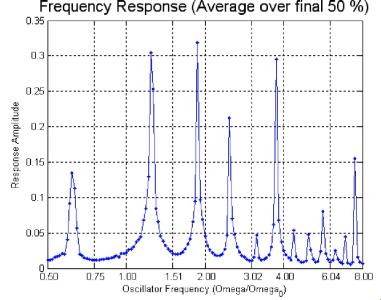Exploring Computational Models of Rhythm Perception
This Project aims to empirically explore a physiologically plausible computational model of rhythm perception. This computational model (Large, 2000) has its theoretical background in non-linear dynamics. It has been suggested that non-linear dynamics provide a set of principles according to which “key aspects of musical experience can be explained directly in terms of nervous systems dynamics” (Large, in press). The aim of the present study will be to exploit the strengths of Edward Large’s canonical model by testing it in previously unexplored areas, in order to see how effectively it can model human behaviour. The evaluation of the model will be based on the comparison of the model’s outputs with existing empirical findings on behaviourally manifested aspects of human polyrhythm perception. A secondary aim is the possibility of using the model to inform the design of behavioural experiments in humans.

Vassilis Angelis, Simon Holland, Martin Clayton, Paul Upton